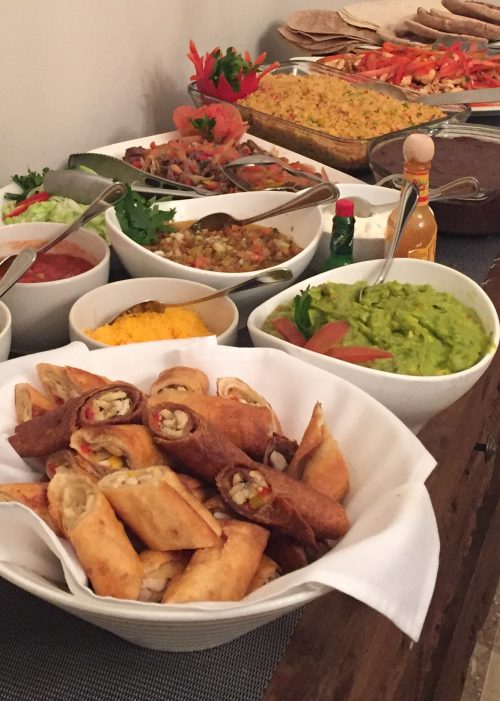BY SAMANTHA SCHWALM
I recently had the pleasure of visiting the Dominican Republic, the second-largest Caribbean nation after Cuba. Discovered by Christopher Columbus on his maiden voyage in 1492. The island, named Hispanola by the settling Europeans, became the first seat of the Spanish colonial rule in the New World. The capital, Santo Domingo, was established in 1496 and is considered by many historians to be the oldest continuously inhabited city of westerners in the Americas. The Dominican Republic did not have complete independence from Spain until the Dominican War of Restoration of 1865. The nation retains heavy Spanish influence in culture, religion and cuisine.
Given the larger size of the island relative to the most in the Caribbean, spectacular golf courses have become one of their main attractions for tourists, including Teeth of the Dog. The course was named by the local workers who helped build multiple holes out of the rocky coastline. However, there is one sport which dominates the Dominican Republic: baseball. Many influential Major League Baseball players hail from the island. Famous players from the Dominican Republic who have played for the Chicago White Sox are Tony Pena and Juan Uribe as well as Sammy Sosa, Aramis Rameriz and Carlos Marmol who played for the Chicago Cubs, just to name a few.

Mr. And Mrs. Andrew Berenzweig, Mr. and Mrs. Michael O’Neill, Mr. and Mrs. Kevin Friedman (all of Toledo, Ohio). Mr. And Mrs. Bret Withey & Mr. And Mrs. Matson Schwalm (both of Chicago).
When I travel to new places, I am instinctively drawn to learn about and sample the local cuisine. Learning about a country’s diet, tasting their dishes and sampling their local spices is a wonderful way to understand and learn about local culture. Dominican cuisine is influenced significantly by Spanish settlers, but you can also sense the influence of the native settlers and African influence from those who arrived during the sixteenth to the early nineteenth century as a result of slavery. In the Dominican Republic, lunch is the largest and most important meal of the day. Menus typically included meat or fish (seasoned with wonderful spice combinations), salad (often containing native grown avocado or hearts of palm and a variation of beans), and rice (which was served with almost every lunch or dinner).
It was interesting to learn that the Dominican Republic does not have lemons but use limes instead, which they ironically call limón. The Dominican Republic is famous for its sport fishing and fresh fish. We viewed mahi mahi, grouper or wahoo coming into the marina and were lucky enough to sample some of this wonderful cuisine, often seasoned with marinades of fresh herbs and limón.
The weather was perfect in February, high 80’s during the day and low 70’s at night. The people are very kind and the cuisine is a wonderful combination of the familiar prepared with a local flair. I highly recommend visiting this beautiful country and am confident that the beach lover, golfer, or foodie will be able to enjoy their visit.
Vegetable Rice Recipe (Serves 4)
1/4 cup vegetable oil
1/2 medium red onion, chopped
1/2 red or green bell pepper, chopped
1 celery stalk, chopped
2 scallions, white and light-green parts only, sliced 1/2″ thick on a diagonal
2 garlic cloves, finely chopped
1 bay leaf
1 teaspoon cumin seeds
1 teaspoon ground turmeric
1/4 teaspoon cayenne pepper
1 cup long-grain rice
2 cups low-sodium chicken broth
1/2 teaspoon kosher salt
2 tablespoons chopped fresh cilantro
2 tablespoons chopped fresh flat-leaf parsley
Sauté onions, bell peppers, celery stalks, scallions, and garlic cloves in a pan until vegetables are translucent. Next, stir in bay leaf, cumin, turmeric, & cayenne pepper. Stir in the rice and the chicken broth. Bring to a boil, cover with a lid and turn off the heat. Let sit for 10 minutes. Finally, add the cilantro and flat-leaf parsley, and it’s ready to serve!
Tomatillo Salsa
2 T olive oil
5 tomatillos
1 tsp kosher salt
1/4 tsp black pepper
3 T Cilantro
2 tsp lime
1 garlic clove
Preheat the oven to 425 degrees.
On a baking sheet place the tomatillos, tossed in the olive, salt & pepper
Baking oven for 15 minutes. The skin should turn brownish black, and the tomatillos should begin to burst open.
Place the tomatillos and any of the juices into a cuisinart or a blender. Then add the rest of the ingredients and blend. Add more salt and pepper to taste.
This may be made a week in advance, and is good in the refrigerator for up to two weeks.










